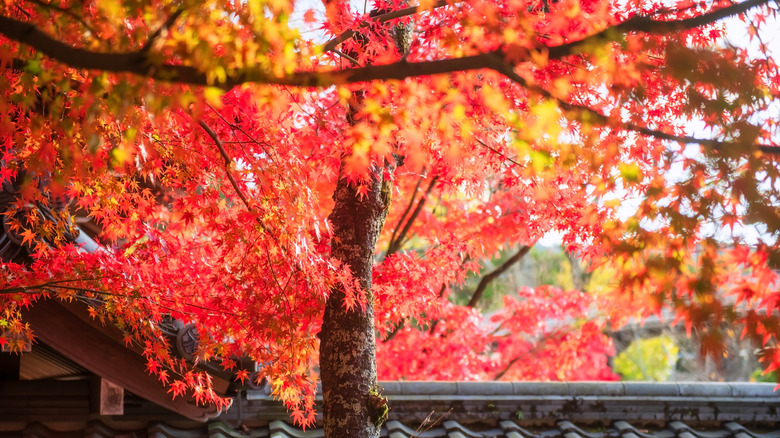This Tree Was Once So Popular. Now, Planting It Could Get You Into Legal Trouble
If you consider yourself a bit of a gardening newbie you may not be aware that there's more to it than basic typical planting dos and don'ts if you want a thriving landscape. Turns out there are some gardening rules that if you don't follow, can actually cross into illegal territory (though it's unlikely to get a harsh sentence). When it comes to the legalities of gardening, it's invasive species that can most often get you in trouble. In fact, one tree that used to be quite popular is not only a landscape tree to avoid, but also illegal in many areas.
Ailanthus altissima, more commonly known as the tree of heaven, is just one of many invasive garden plants to avoid. Before this was widely known, however, this ornamental, deciduous plant was actually highly sought after. When the tree of heaven was brought over from China in the 1700s, it was originally quite popular as a shade tree. It was easy to plant, grew very quickly, and lacked many of the insect or disease problems other trees were plagued by. These desirable properties made it a common choice for urban landscapers, which led to its widespread use. Unfortunately, the tables turned when people began to realize the highly invasive nature of the tree of heaven, despite its alluring name.
Ditch the invasive tree of heaven for other gorgeous shade trees
The tree of heaven's popularity for its fast growth quickly turned into its downfall. The tree grew so fast it was quick to take over areas, pushing out and oftentimes killing native species. When an imported plant displaces its native counterparts, it can result in a dysregulation of the local ecosystem. Not only was the tree of heaven guilty of this type of disruption but its large root system also became responsible for issues with nearby pavements like dangerous cracks and fissures as well as destabilizing building foundations. Though this plant could quickly grow and provide shade, its negatives started to greatly outweigh the positives. Don't worry, though, we've got some great alternative fast-growing shade trees you can legally use in your landscaping.
If you're looking for the perfect shade tree for your yard, consider the red sunset maple (Acer rubrum 'Franksred'). Like the tree of heaven, the red sunset maple (grown in hardy zones 4-8) is fast-growing and will also showcase some gorgeous colors all throughout the year. In winter, spring, and summer, the tree has flowers, leaves, and fruits that all boast a lovely red hue. Come fall, the red sunset maple puts on one of the most colorful displays of changing leaves, giving the tree its common name for its similarity to a sunset. If this one doesn't fit the bill, there are plenty of others like the beautiful tuliptree (zones 4-9) or the well-known American sweetgum (zones 5-9).

